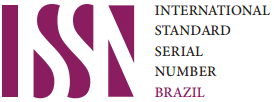Orientação sexual e identidade de gênero: a homossexualidade e seus reflexos na saúde mental de estudantes de medicina de uma universidade sergipana
DOI:
https://doi.org/10.25118/2763-9037.2022.v12.354Palavras-chave:
homossexualidade, depressão, estudantes de medicinaResumo
Introdução: Por orientação sexual depreende-se como padrão de excitação física e emocional de um indivíduo, incluindo fantasias, comportamentos e atividades, e o(s) gênero(s) a quem um indivíduo é física ou sexualmente atraído. Lésbicas, gays, bissexuais e transgêneros (sigla LGBT) fazem parte de uma minoria que sofre muito preconceito e está sob constante estigma, logo, estão envoltos em diversos estressores Objetivo: Estimar a prevalência da população de lésbicas, gays, bissexuais e transexuais (LGBT) no curso de medicina de uma universidade sergipana; identificar possível desconforto quanto à orientação sexual no corpo discente; descobrir indícios de depressão nos participantes da pesquisa segundo a sua orientação sexual; determinar a relação entre desconforto e o relacionamento social acadêmico. Método: Amostra do tipo conveniência com 142 acadêmicos que assinaram o Termo de Consentimento Livre e Esclarecido e responderam quatro questionários: demográfico, Inventário de Depressão de Beck, Escala de Avaliação do Ambiente Acadêmico Frente às Necessidades da População LGBT e a Escala de Percepção de Suporte Social. Resultados: A minoria LGBT apresentou níveis maiores de aceitação e de percepção de suporte social, porém, quanto ao conhecimento de políticas públicas específicas para eles na academia, ambos os grupos demonstraram desconhecimento sobre o tema. Conclusão: Importante discutir sobre questões de gênero e saúde mental, tendo como finalidade buscar suporte psicológico e social aos que estão sofrendo.
Downloads
Métricas
Referências
Kessler RC, Ormel J, Petukhova M, McLaughlin KA, Green JG, Russo LJ, Stein DJ, Zaslavsky AM, Aguilar-Gaxiola S, Alonso J, Andrade L, Benjet C, De Girolamo G, De Graaf R, Demyttenaere K, Fayyad J, Haro JM, Chi yi Hu, Karam A, Lee S, Lepine JP, Matchsinger H, Mihaescu-Pintia C, Posada-Villa J, Sagar R, Üstün TB. Development of lifetime comorbidity in the World Health Organization world mental health surveys. Arch Gen Psychiatry 2011;68(1):90-100. https://doi.org/10.1001/archgenpsychiatry.2010.180 PMid:21199968 - PMCid:PMC3057480
Linzer M, Spitzer R, Kroenke K, Williams JB, Hahn S, Brody D, deGruy F. Gender, quality of life, and mental disorders in primary care: results from the PRIME-MD 1000 study. Am J Med 1996;101(5):526-33. https://doi.org/10.1016/S0002-9343(96)00275-6
Spitzer RL, Kroenke K, Williams JB. Validation and utility of a self-report version of PRIME-MD: the PHQ primary care study. Primary Care Evalutation of Mental Disorders. Patient Health Questionnaire. JAMA 1999;282(18):1737-44. https://doi.org/10.1001/jama.282.18.1737 - PMid:10568646
Ansseau M, Dierick M, Buntinkx F, Cnockaert P, De Smedt J, Van Den Haute M, Mijnsbrugge DV. High prevalence of mental disorders in primary care. J Affect Disord 2004;78(1):49-55. https://doi.org/10.1016/S0165-0327(02)00219-7
Roca M, Gili M, Garcia-Garcia M, Salva J, Vives M, Garcia Campayo J, Comas A. Prevalence and comorbidity of common mental disorders in primary care. J Affect Disord 2009;119(1-3):52-58. https://doi.org/10.1016/j.jad.2009.03.014 - PMid:19361865
Simon GE, VonKorff M, Piccinelli M, Fullerton C, Ormel J. An international study of the relation between somatic symptoms and depression. N Engl J Med 1999;341:1329. https://doi.org/10.1056/NEJM199910283411801 - PMid:10536124
Tylee A, Gandhi P. The importance of somatic symptoms in depression in primary care. Prim Care Companion J Clin Psychiatry 2005;7(4):167-176. https://doi.org/10.4088/PCC.v07n0405 PMid:16163400 - PMCid:PMC1192435
Bell RA, Franks P, Duberstein PR, Epstein RM, Feldman MD, Fernandez y Garcia E, Kravitz RL. Suffering in silence: reasons for not disclosing depression in primary care. Ann Fam Med 2011;9(5):439-46. https://doi.org/10.1370/afm.1277 - PMid:21911763 - PMCid:PMC3185469
Levine DA, Committee On Adolescence. Office based-care for lesbian, gay, bisexual, transgender and questioning youth. Pediatrics 2013;132(1)e297-e313. https://doi.org/10.1542/peds.2013-1283 - PMid:23796737
Taywaditep KJ. Marginalization among the marginalized: gay men’s anti-effeminacy atitudes. J Homosex 2001;42(1):1-28. https://doi.org/10.1300/J082v42n01_01 - PMid:11991561
Herek GM. Heterosexuals attitudes toward bisexual men and women in the United States. J Sex Res 2002;39(4):264-74. https://doi.org/10.1080/00224490209552150 - PMid:12545409
Rosario M, Schrimshaw EW, Hunter J, Gwadz M. Gay-related stress and emotional distress among gay, lesbian and bisexual youths: a longitudinal examination. J Consult Clin Psychol 2002;70(4):967-75. https://doi.org/10.1037/0022-006X.70.4.967 - PMid:12182280
Mays VM, Cochran SD. Mental health correlates of perceived discrimination among lesbian, gay and bisexual adults in the United States. Am J Public Health 2001;91(11):1869-76. https://doi.org/10.2105/AJPH.91.11.1869 - PMid:11684618 - PMCid:PMC1446893
Meyer IH. Prejudice, social stress, and mental health in lesbian, gay, and bisexual populations: conceptual issues and research evidence. Pyschol Bull 2003;129(5):674-697. https://doi.org/10.1037/0033-2909.129.5.674 - PMid:12956539 - PMCid:PMC2072932
Cochran SD, Keenan C, Schober C, Mays, VM. Estimates of alcohol use and clinical treatment needs among homosexually active men and women in the U.S. population. J Consult Clin Psychol 2002;68(6):1062-1071. https://doi.org/10.1037/0022-006X.68.6.1062
Drabble L, Trocki K. Alcohol consumption, alcohol-related problems, and other substance use among lesbian and bisexual women. J Lesbian Stud 2005;9(3):19-30. https://doi.org/10.1300/J155v09n03_03 - PMid:17548282
Sanlo R. Lesbian, gay, and bisexual college students: risk, resiliency and retention. J Coll Stud Ret 2004;6(1):97-110. https://doi.org/10.2190/FH61-VE7V-HHCX-0PUR
Aghakhani N, Nia HS, Eghtedar S, Rahbar N, Jasemi M, Zadeh MM. Prevalence of depression among students of Urmia University of Medical Sciences (Iran). Iran J Psychiatry Behav Sci 2011;5(2):131-135. https://doi.org/10.1016/S0924-9338(11)72303-3
Sidana S, Kishore J, Ghosh V, Gulati D, Jiloha R, Anand T. Prevalence of depression in students of a medical college in New Delhi: a cross-sectional study. Australas Med J. 2012;5(5)247-250. https://doi.org/10.4066/AMJ.2012.750 PMid:22848319 PMCid:PMC3395288
Valle R, Sánchez E, Perales A. Sintomatología depressiva y problemas relacionados al consumo de alcohol durante la formación académica de estudiantes de Medicina. Rev Peru Med Exp Salud Publica. 2013;30(1):54-57. https://doi.org/10.1590/S1726-46342013000100011 - PMid:23612813
Santos GEO. Cálculo amostral: calculadora online. Disponível em: http://www.calculoamostral.vai.la Acesso em: 13 jan. 2017.
Gomes-Oliveira MH, Gorenstein C, Lotufo Neto F, Andrade LH, Wang YP. Validation of the Brazilian Portuguese version of the Beck Depression Inventory-II in a community sample. Rev. Bras. Psiquiatr. 2012;34(4):389-394. https://doi.org/10.1016/j.rbp.2012.03.005 - PMid:23429809
Campus Pride. LGBT-friendly campus climate index. 2013. Disponível em: http://www.campusprideindex.org/about/default.aspx Acesso em: 1 maio 2017.
Coyne JC, Schwenk L. The relationship of distress to mood disturbance in primary care and psychiatric populations. J Consult Clin Psychol 1997;65(1):161-168. https://doi.org/10.1037/0022-006X.65.1.161
GIVENS JL, TJIA J. Depressed medical students’ use of mental health services and barriers to use. Acad Med. 2002;77(9):918-921. https://doi.org/10.1097/00001888-200209000-00024 - PMid:12228091
TYSSEN R, VAGLUM P, GRONVOLD NT, EKEBERG O. Suicidal ideation among medical students and young physicians: a nationwide and prospective study of prevalence and predictors. J Affect Disord. 2001;64(1):69-79. https://doi.org/10.1016/S0165-0327(00)00205-6
TJIA J, GIVENS JL, SHEA JÁ. Factors associated with undertreatment of medical student depression. J Am Coll Health. 2005;53(5):219-224. https://doi.org/10.3200/JACH.53.5.219-224 - PMid:15813232
STEWART SM, LAM TH, BETSON C, WONG CM, WONG AM. A prospective analysis of stress and academic performance in the first two years of medical school. Med Educ. 1999;33:243–50 https://doi.org/10.1046/j.1365-2923.1999.00294.x PMid:10336754
WOLF TM, FAUCETT JM, RANDALL HM, BALSON PM. Graduating medical students’ ratings of stresses, pleasures, and coping strategies. J Med Educ. 1988;63:636–42 https://doi.org/10.1097/00001888-198808000-00008 PMid:3398019
MACLEOD R, PARKIN C, PULLON S, ROBERTSON G. Early clinical exposure to people who are dying: learning to care at the end of life. Med Educ. 2003;37:51–58 https://doi.org/10.1046/j.1365-2923.2003.01412.x - PMid:12535115
PIMENTEL D, SOUZA LSM, MOROMIZATO MS, FERREIRA DBB. Padrão de uso da Internet e redes sociais e implicações na saúde mental de estudantes de Medicina. In: LOPES AJ, BARBIERI CP, RAMOS MBJ, BARRETO RA. Conexões virtuais: diálogos com a Psicanálise. São Paulo: Escuta, 2016. Cap. 03, p. 41-79
MOROMIZATO MS, FERREIRA DBB, SOUZA LS, LEITE RF, MACEDO FN, PIMENTEL D. O uso de Internet e redes sociais e a relação com indícios de ansiedade e depressão em estudantes de Medicina. Revista Brasileira de Educação Médica. 2017;41:497-504. https://doi.org/10.1590/1981-52712015v41n4rb20160118
DANS PE. Self-reported cheating by students at one medical school. Acad Med. 1996;71(1suppl):S70–S72. https://doi.org/10.1097/00001888-199601000-00046 PMid:8546788
NEWBURY-BIRCH D, WALSHAW D, KAMALI F. Drink and drugs: from medical students to doctors. Drug Alcohol Depend. 2001;64:265–70. https://doi.org/10.1016/S0376-8716(01)00128-4
BALDASSIN S, ALVES TC, ANDRADE AG, NOGUEIRA MARTINS L A. The characteristics of depressive symptoms in medical students during medical education and training: a cross-sectional study. BMC Med Educ. 2008;8:60. https://doi.org/10.1186/1472-6920-8-60 PMid:19077227 PMCid:PMC2621219
SCHWENK TL, DAVIS L, WIMSATT LA. Depression, stigma, and suicidal ideation in medical students. JAMA. 2010;304(11):1181-90. https://doi.org/10.1001/jama.2010.1300 PMid:20841531
CAVESTRO JM, ROCHA FL. Prevalência de depressão entre estudantes universitários. J Bras Psiquiatr. 2006;55(4):264-267. https://doi.org/10.1590/S0047-20852006000400001
VALLILO NG, DANZI JÚNIOR R, GOBBO R, NOVO NF, HÜBNER, CK. Prevalência de sintomas depressivos em estudantes de Medicina. Rev Bras Clin Med. 2011;9(1):36-41. Disponível em: http://files.bvs.br/upload/S/1679-1010/2011/v9n1/a1720.pdf Acesso em: 1 set. 2007.
TJIA J, GIVENS JL, SHEA JA. Factors associated with undertreatment of medical student depression. J Am Coll Health. 2005;53(5):219-224. https://doi.org/10.3200/JACH.53.5.219-224 PMid:15813232
Wyss SE. ‘This was my hell’: the violence experienced by gender nonconforming youth in US high schools. Int J Qual Stud Educ. 2004;17(5):709- 730. https://doi.org/10.1080/0951839042000253676
Rivas-Koehl M, Valido A, Espelage DL, Robinson LE, Hong JS, Kuehl T, Mintz S, Wyman PA. Understanding protective factors for suicidality and depression among US sexual and gender minority adolescents: implications for school psychologists. School Psychology Review. 2021; 1-14. https://doi.org/10.1080/2372966X.2021.1881411
Ancheta AJ, Bruzzese JM, Hughes TL. The impact of positive school climate on suicidality and mental health among LGBTQ adolescents: a systematic review. The Journal of School Nursing. 2021;37(2):75-86. https://doi.org/10.1177/1059840520970847 PMid:33287652 PMCid:PMC8142116
Risdon C, COOK D, WILLMS D. Gay and lesbian physicians in training: a qualitative study. CMAJ. Canadian Medical Association Journal. 2000;162(3):331-334. Disponível em: https://www.cmaj.ca/content/162/3/331#xref-ref-6-1 Acesso em: 1 set. 2007
Lapinski J, Sexton P. Still in the closet: the invisible minority in medical education. BMC Med Educ, 2014;14:171. https://doi.org/10.1186/1472-6920-14-171 - PMid:25128252 PMCid:PMC4137271

Downloads
Publicado
Como Citar
Edição
Seção
Licença
Copyright (c) 2022 Danilo Bastos Bispo Ferreira, Fernanda Bastos Bispo Ferreira, Camila Costa Santos Menezes, Adozina Marques de Souza Neta, Bianca de Souza Leite Pessôa, Roberta Machado Pimentel Rebello Mattos, Déborah Pimentel

Este trabalho está licenciado sob uma licença Creative Commons Attribution-NonCommercial 4.0 International License.
Debates em Psiquiatria permite que o (s) autor (es) mantenha(m) seus direitos autorais sem restrições. Atribuição-NãoComercial 4.0 Internacional (CC BY-NC 4.0) - Debates em Psiquiatria é regida pela licença CC-BY-NC































